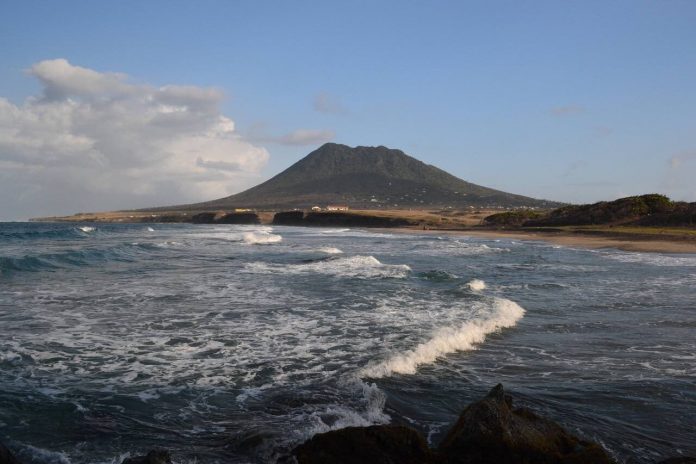In a new study, published in the journal Nature, an international team of scientists provide the first conclusive evidence directly linking deep Earth’s water cycle and its expressions with magmatic productivity and earthquake activity.
Water (H2O) and other volatiles (e.g. CO2 and sulphur) that are cycled through the deep Earth have played a key role in the evolution of our planet, including in the formation of continents, the onset of life, the concentration of mineral resources, and the distribution of volcanoes and earthquakes.
Subduction zones, where tectonic plates converge and one plate sinks beneath another, are the most important parts of the cycle — with large volumes of water going in and coming out, mainly through volcanic eruptions. Yet, just how (and how much) water is transported via subduction, and its effect on natural hazards and the formation of natural resources, has historically been poorly understood.
Lead author of the study, Dr George Cooper, Honorary Research Fellow at the University of Bristol’s School of Earth Sciences, said: “As plates journey from where they are first made at mid-ocean ridges to subduction zones, seawater enters the rocks through cracks, faults and by binding to minerals. Upon reaching a subduction zone, the sinking plate heats up and gets squeezed, resulting in the gradual release of some or all of its water. As water is released it lowers the melting point of the surrounding rocks and generates magma. This magma is buoyant and moves upwards, ultimately leading to eruptions in the overlying volcanic arc. These eruptions are potentially explosive because of the volatiles contained in the melt. The same process can trigger earthquakes and may affect key properties such as their magnitude and whether they trigger tsunamis or not.”
Exactly where and how volatiles are released and how they modify the host rock remains an area of intense research.
Most studies have focused on subduction along the Pacific Ring of Fire. However, this research focused on the Atlantic plate, and more specifically, the Lesser Antilles volcanic arc, located at the eastern edge of the Caribbean Sea.
“This is one of only two zones that currently subduct plates formed by slow spreading. We expect this to be hydrated more pervasively and heterogeneously than the fast spreading Pacific plate, and for expressions of water release to be more pronounced,” said Prof. Saskia Goes, Imperial College London.
The Volatile Recycling in the Lesser Antilles (VoiLA) project brings together a large multidisciplinary team of researchers including geophysicists, geochemists and geodynamicists from Durham University, Imperial College London, University of Southampton, University of Bristol, Liverpool University, Karlsruhe Institute of Technology, the University of Leeds, The Natural History Museum, The Institute de Physique du Globe in Paris, and the University of the West Indies.
“We collected data over two marine scientific cruises on the RRS James Cook, temporary deployments of seismic stations that recorded earthquakes beneath the islands, geological fieldwork, chemical and mineral analyses of rock samples, and numerical modelling,” said Dr Cooper.
To trace the influence of water along the length of the subduction zone, the scientists studied boron compositions and isotopes of melt inclusions (tiny pockets of trapped magma within volcanic crystals). Boron fingerprints revealed that the water-rich mineral serpentine, contained in the sinking plate, is a dominant supplier of water to the central region of the Lesser Antilles arc.
“By studying these micron-scale measurements it is possible to better understand large-scale processes. Our combined geochemical and geophysical data provide the clearest indication to date that the structure and amount of water of the sinking plate are directly connected to the volcanic evolution of the arc and its associated hazards,” said Prof. Colin Macpherson, Durham University
“The wettest parts of the downgoing plate are where there are major cracks (or fracture zones). By making a numerical model of the history of fracture zone subduction below the islands, we found a direct link to the locations of the highest rates of small earthquakes and low shear wave velocities (which indicate fluids) in the subsurface,” said Prof. Saskia Goes.
The history of subduction of water-rich fracture zones can also explain why the central islands of the arc are the largest and why, over geologic history, they have produced the most magma.
“Our study provides conclusive evidence that directly links the water-in and water-out parts of the cycle and its expressions in terms of magmatic productivity and earthquake activity. This may encourage studies at other subduction zones to find such water-bearing fault structures on the subducting plate to help understand patterns in volcanic and earthquake hazards,” said Dr Cooper.
“In this research we found that variations in water correlate with the distribution of smaller earthquakes, but we would really like to know how this pattern of water release may affect the potential — and act as a warning system — for larger earthquakes and possible tsunami,” said Prof. Colin Macpherson.















